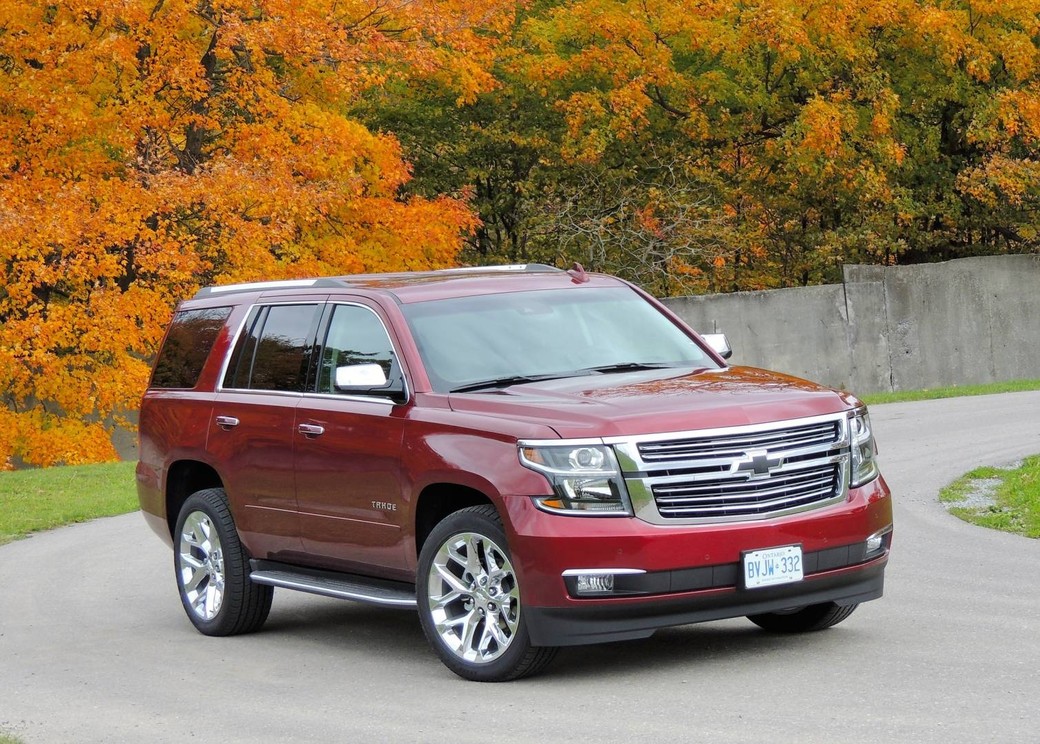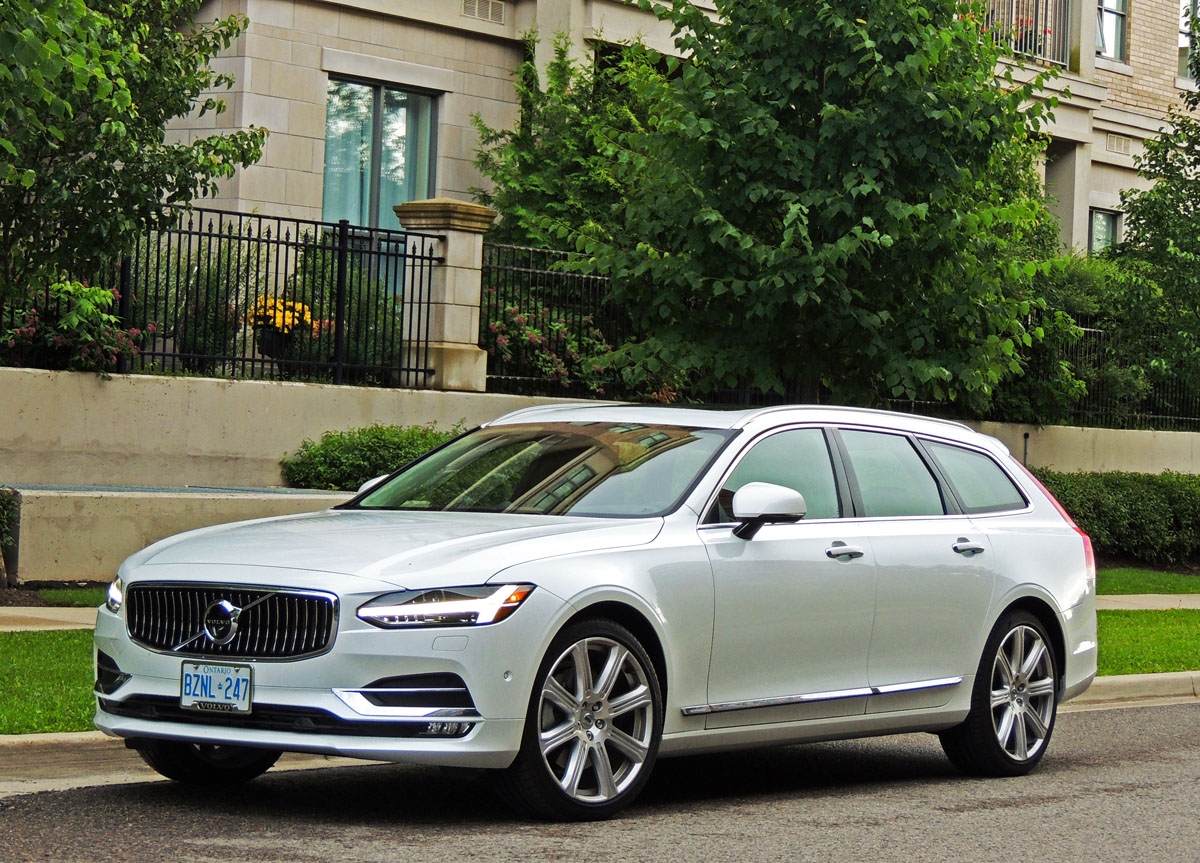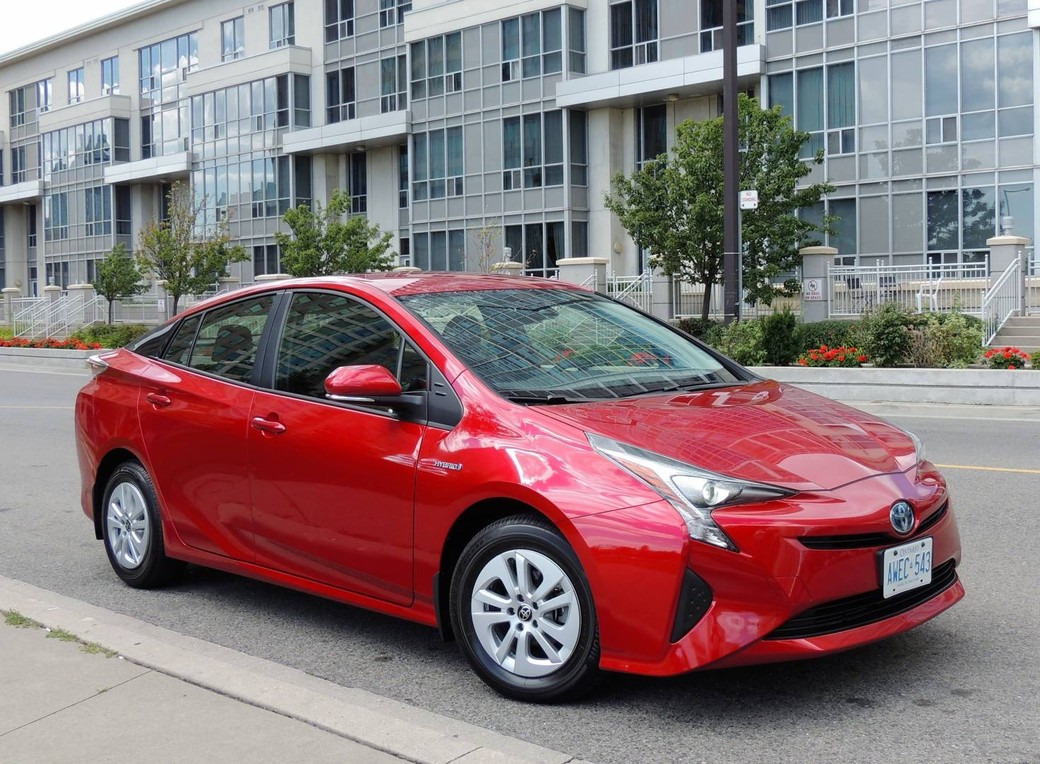
Thrifty Prius Now Wears Eye-catching Style
Since coming here in 2000, Toyota Prius has pretty much defined the hybrid segment.
Others soon followed – like Honda Insight and the less quirky Civic Hybrid – but it was this five-door liftback that became the sweetheart of conscientious sandal-wearing folk hoping to save our polar bears.
But the exceedingly practical and efficient Prius was like kale to me – a perfectly wise bandwagon on to which I just couldn’t hop.
It wasn’t so much about performance. Sipping fuel at a rate of 4.6/4.9/4.7 litres/100 km, one couldn’t expect hot-hatch acceleration.
It was the look. I couldn’t get past Prius’s frumpy wedge styling.
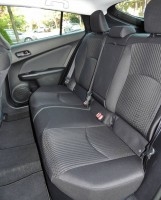
Nonetheless, it became the world’s most popular hybrid, and still retains top spot globally. And even though the RAV4 hybrid outpaces it in Canada, Prius has seen a 67 percent increase in sales thanks to the all-new fourth generation model – my tester for the week.
It is longer, wider and significantly more striking than the outgoing model.
What was lumpy is now sleek, with a high and rising beltline that meets the roofline in rear. The spoiler flows into a sharp fin that defines the shoulders, helping Prius slice the air with a drag coefficient of 0.24.
The slippery shape is aided by a lowered hood, automatic grille shutter, window garnishes and aero stabilizing fins on the underfloor covers.
Prius’s powertrain carries over from last model – a 1.8-litre four-cylinder gas engine with two electric motors and a continuously variable transmission.
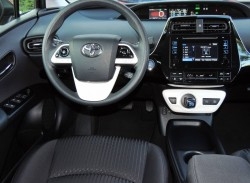
But there have been tweaks to make it even thriftier, averaging just 4.5L/100KM (city/highway combined).
Its hybrid transaxle has been engineered to reduce parasitic losses by 20 percent, but fuel economy improvements aren’t just about the electrics. Thanks to reduced friction and better combustion, the gas engine benefits from a higher 40 percent thermal efficiency. Incremental changes like using smaller, lighter parts also contribute to the car’s parsimonious ways.
Horsepower nets out at 121 (combined gas/electric), which is a little less than last gen. But when choosing “power” mode over “normal” or “eco,” performance is far from sluggish. The instantaneous torque from the electric motors gives it enough launch to handle the cut and thrust of urban traffic.
Managing your petrol consumption – no doubt a preoccupation with hybrid buyers – is easily done with the Eco Diary, found on one of the two 4.2-inch TFT displays atop the centre stack. It’s like a report card, listing distance and average fuel economy for the day.
There’s also real-time feedback on acceleration and braking, and an energy monitor so you can see where the power is coming from: gas, battery or both.
Despite my tendency to be somewhat liberal with the pedal, I still averaged 4.4 litres/100 km. Slightly better than the NRCan ratings. And according to the monitor, my EV ratio was 32 percent, meaning that roughly one-third of my driving was without .
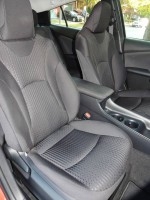
Like last model, the instrument panel is centre-mounted. It takes some getting used to, but with its large digital readout – great for older eyes – there’s no mistaking your speed.
The centre console gets a piano black faceplate around the HVAC and infotainment, and gloss white around the drive modes and toggle shifter below.
This last item uses shift-by-wire tech to toggle from park to reverse to drive with your fingertips. I prefer the solid engagement of a traditional gear lever, but like the central IP, you do get used to it.
Overall, the interior is modern and functional with a nice mix of finishes and fabrics, albeit plenty of hard plastic. At least it’s leather-grained and not the shiny stuff.
Seats are upholstered in an attractive grippy fabric, with plenty of bolstering up front. Seats in my 2016 Prius were also heated, which was part of an upgrade package ($590) that also included the pre-collision system, lane departure alert, auto high beam and radar cruise control. Quite a bargain, but these are now included in the base model for 2017 ($27,055).
Indeed, the only changes in the coming year – which is on sale now – are in content and packaging.
Other standard equipment for 2017 includes 6.1-inch display audio with six speakers, backup camera, smart key with pushbutton start, tilt/telescopic steering, automatic climate control, and more.
There’s also a Technology package ($29,060), Touring ($30,290), and Technology Advanced ($32,365) that adds premium features like blind spot monitor with cross traffic alert, parking sensors, heads-up display and eight-way power for the driver’s seat.
All Prius models provide loads of back seat leg room, and despite the rear-sloping roofline and sportier shape, ample head room as well.
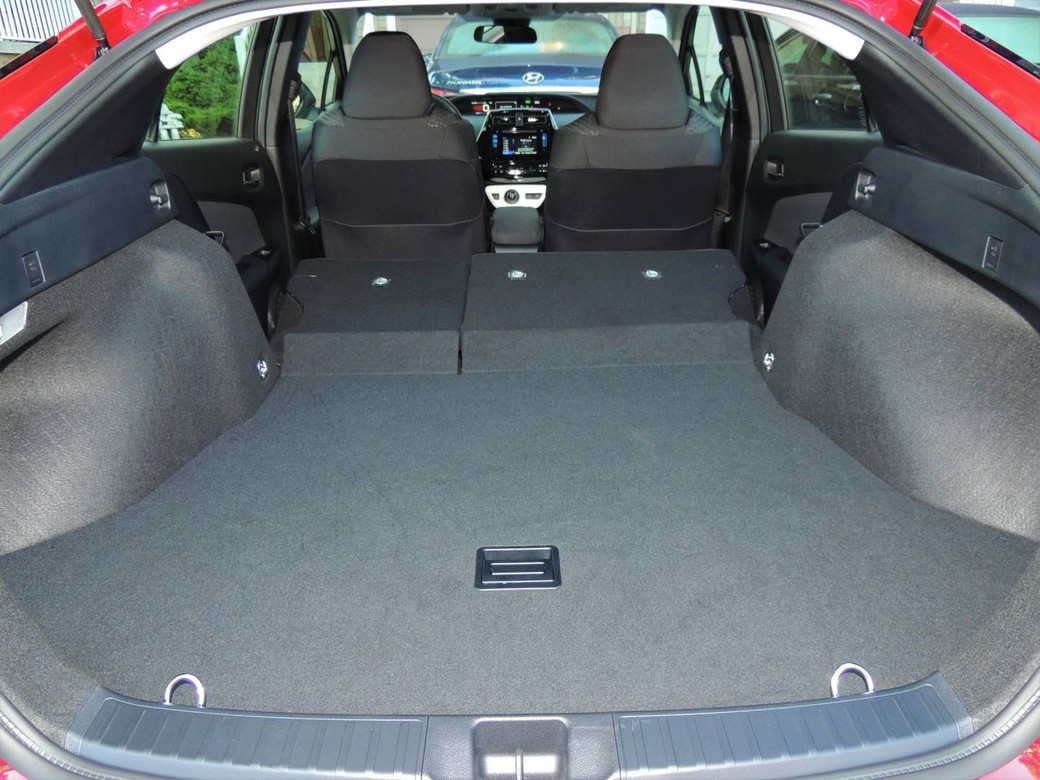
Cargo capacity is a generous 697 litres, but the rear 60/40 seats fold flat to provide enough space for a couple of bikes or load of camping gear.
Ride and handling have also improved, thanks to a more rigid body, new double-wishbone rear suspension and lower centre of gravity. It’s no sports car, but noticeably nimbler than its predecessor. And with abundant insulation and isolation materials, ride is quite and well insulated from road noise and imperfections.
If this particular Prius doesn’t check all your boxes, there’s the smaller Prius C and crossover-sized Prius V with its 1,906-litre max cargo capacity. And arriving in late 2016 is the snappy-looking Prius Prime, replacing the plug-in model.
All of which show that Toyota is taking nothing for granted in the increasingly competitive hybrid market.
SNAPSHOT: 2016/2017 Toyota Prius
BODY STYLE: five-door liftback
ENGINE: DOHC 1.8 litre, 16-valve four cylinder with electric motors (121 net system hp)
TRANSMISSION: continuously variable transmission, FWD
FUEL ECONOMY: 4.4/4.6/4.5 L/100 km (city/hwy/comb)
CARGO: 697 litres
PRICING (2017): base $27,055; Technology package ($29,060); Touring ($30,290); Technology Advanced ($32,365)
WEBSITE: toyota.ca


